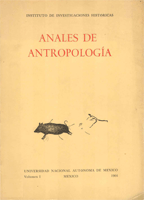El Neolítico y la discusión del problema indoeuropeo
Contenido principal del artículo
Resumen
En este trabajo se realiza una revisión crítica de un articulo del mismo autor, en donde el tema principal es “El problema indoeuropeo”. Según sus conclusiones, no cree que se de un origen único y un hogar único del grupo indoeuropeo, sin embargo Gimbutos piensa que las culturas de Europa no vienen sólo de grupos indoeuropeos, sino que su origen proviene de grupos nómadas de las estepas de Rusia y Asia y que la llegada de grupos indoeuropeos se dio sólo después de movimientos migratorios occidentales, en el milenio III a. C. Por otro lado, las culturas neolíticas y la era del Bronce en Siberia son considerados como los orígenes de aquellos migrantes indoeuropeos.
Descargas
Los datos de descargas todavía no están disponibles.
Detalles del artículo
Cómo citar
Bosch-Gimpera, P. (2010). El Neolítico y la discusión del problema indoeuropeo. Anales De Antropología, 3(1). https://doi.org/10.22201/iia.24486221e.1966.1.17212
Citas en Dimensions Service
Esta revista usa una licencia CC del tipo CC BY-NC-ND 3.0. Se maneja bajo el esquema de acceso abierto, con una licencia Creative Commons Attribution-NonCommercial-NoDerivs 3.0 Unported.

